
In the domain of manufacturing and CNC machining, precision is paramount. But achieving this precision often hinges on tools and components that the average person rarely hears about jigs and fixtures. These invaluable tools play a crucial role in ensuring consistency, efficiency, and accuracy in manufacturing processes. They aid in holding, supporting, and aligning the parts being machined or assembled. While both serve the overarching purpose of positioning and holding a workpiece, they have distinct characteristics and applications.
In this comprehensive guide, we will dissect the world of jigs and fixtures, shedding light on their significance, differences, types, and selection nuances.
Defining Jigs and Fixtures
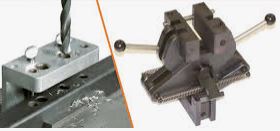
Jigs and fixture
In the realm of manufacturing, particularly within CNC machining and assembly, jigs and fixtures hold paramount importance. They are critical components used to uphold quality, consistency, and efficiency during the production process. Despite their shared goal of ensuring the precision of operations, jigs, and fixtures are characterized by distinct features and functions. Let’s delve deeper into understanding these two tools.
Jigs – A Comprehensive Understanding
A jig is a custom-designed tool whose primary purpose is to control and guide another tool. Its design often incorporates features that ensure proper positioning, orientation, and movement of the tool it is guiding.
- Functionality: The jig’s main function revolves around directing the tool’s operation. For instance, in a drilling operation, the jig will guide the drill bit to ensure that holes are made accurately in the desired location on a workpiece.
- Components: A typical jig may include drill bushings which are hardened steel tubes placed in the jig to guide the drill bit.
- Design Customization: Jigs are generally customized to the specific operation for which they are intended. This customization ensures optimal performance and accuracy for that specific task.
- Types: While we delve deeper into the types in another section, it’s worth noting here that jigs vary based on their operation. For instance, drill jigs are designed specifically for drilling operations, channel jigs are tailored for longer workpieces, and index jigs can handle equidistant holes on circular workpieces.
Fixtures – A Closer Examination
Fixtures, while often mistaken for jigs, serve a more static function. They are primarily designed to hold the workpiece in place during machining or assembly operations.
- Functionality: Unlike jigs, fixtures do not guide the tool. Instead, they ensure that the workpiece is securely and correctly positioned and oriented during machining. By doing so, they play a vital role in guaranteeing that every piece produced is consistent with the next.
- Components: A typical fixture might include clamps (to hold the workpiece), locators (to ensure the correct position), and supports (to maintain stability during machining).
- Design Consideration: Fixtures are designed considering the geometry, size, and stability of the workpiece. They often incorporate hydraulic or pneumatic clamping systems for enhanced efficiency, especially in high-volume production scenarios.
- Applications: The applicability of fixtures spans across various machining operations. From milling and turning to grinding, the right fixture ensures the workpiece remains stationary and oriented correctly throughout the operation.
So, Jigs and fixtures play a significant role in ensuring consistency, efficiency, and quality enhancement in machining processes. Their introduction has minimized setup times and errors, reduced human error, and ensured optimal tool performance, leading to higher-quality end products that align with design specifications.
What Are the Different Types of Jigs?
The world of manufacturing often revolves around efficiency and precision. One tool that plays a significant role in achieving both is the jig. Jigs are specialized devices that guide the cutting tool and ensure its correct operation in terms of position and direction. There is a broad spectrum of jig types, each tailored for specific machining operations and challenges.
- Drill Jigs
Template Jig is one of the simplest forms of a jig, which operates much like a stencil. The template jig is primarily used in drilling operations and is designed with predetermined hole patterns. It aids in ensuring that holes are accurately drilled into a workpiece at specific locations. Because of its straightforward design, it’s suitable for operations that don’t necessitate the use of complex machinery, often involving just a hand tool.

Schematic diagram of channel jig
Another type of drill jig, known as the Channel Jig, is named after its distinct channel-like structure. It is designed specifically to hold long and slender workpieces that require drilling. Its design ensures that the workpiece remains stable throughout the operation, ensuring precision and minimizing errors.
- Index Jigs
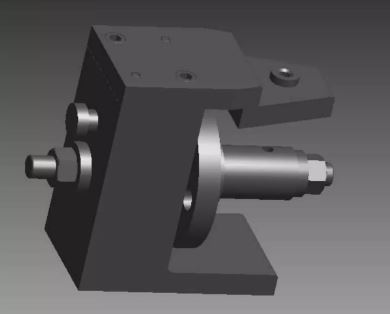
Index jigs
Radial jig, an index jig is a marvel for those operations that require multiple, equidistant holes to be drilled on a circular workpiece. The radial jig comes equipped with an indexing mechanism, which ensures that each hole is consistently spaced, providing uniformity and precision to the final product.
- Turning Jigs
Turning jig or Faceplate Jig is a type of jig is specifically designed for light machining operations on a lathe. The faceplate jig attaches directly to the lathe’s faceplate, providing a stable and secure platform upon which the workpiece can be accurately machined, ensuring consistency and precision.
- Milling Jigs

Sandwich jigs
The sandwich jig is the most common milling jig, offering a unique approach to holding a workpiece. It is specifically designed for milling thin parts and “sandwiches” the workpiece between a top and bottom plate. This not only provides stability to the workpiece but also ensures that it remains flat during the milling process, leading to precise and accurate results.
- Grinding Jigs
Precision is the cornerstone of grinding operations, and the form jig is designed with this in mind. This jig type comes with an integral component that directly guides the tool. It ensures that a specific shape or profile is consistently achieved on the workpiece, making it invaluable for operations that demand high accuracy.
What Are the Different Types of Fixtures?
Fixtures are indispensable tools in the manufacturing realm. Unlike jigs, they do not guide the cutting tool but instead securely hold the workpiece in the correct position and orientation during a machining or assembly operation. Fixtures are as varied as the operations they support, with each type serving a specific purpose.
1. Milling Fixtures
The plain milling fixture is a versatile tool that offers flexibility and precision. It securely holds the workpiece, offering three degrees of freedom, ensuring that it is milled accurately regardless of its shape or size.
The string milling fixture, on the other hand, is designed for milling multiple parts simultaneously. It is modular in design, allowing for easy adaptation to hold various workpieces, ensuring efficiency and precision across different milling tasks.
2. Turning Fixtures
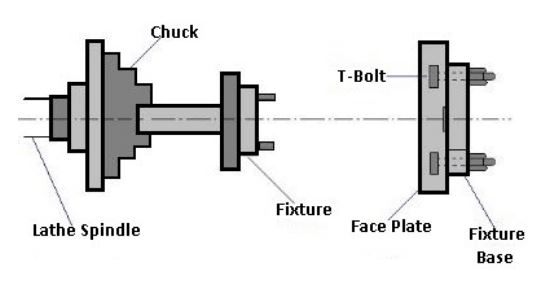
Schematic diagram of profile turning fixture
Turning operations require exact precision to ensure the workpiece profile remains consistent. The profile turning fixture ensures just that. It holds the workpiece securely, making sure its profile is maintained throughout the turning process.
3. Grinding Fixtures
When it comes to grinding flat surfaces, the surface grinding fixture is the go-to choice. Equipped with adjustable stops, it ensures that the workpiece achieves the correct depth of grind, leading to precise results every time.
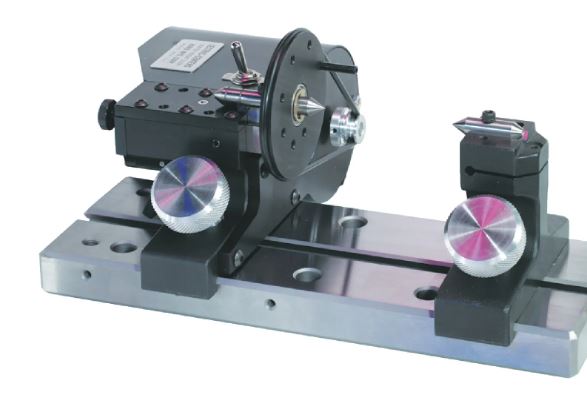
Cylindrical grinding fixture
Catering to both external and internal grinding of cylindrical workpieces, the cylindrical grinding fixture is a testament to precision engineering. It holds the workpiece securely, ensuring it remains stationary and correctly oriented throughout the grinding process.
4. Welding Fixtures
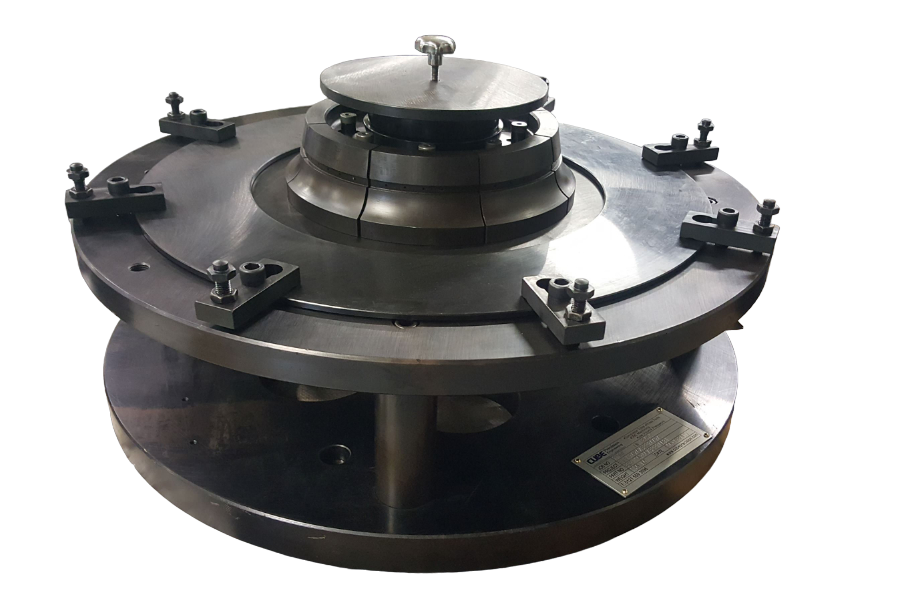
Welding fixture
Welding demands stability, and the modular welding fixture provides just that. Made of standardized modules, it can hold workpieces of various shapes and sizes, ensuring they remain stationary during the welding process.
5. Assembly Fixtures
Two types of assembly fixtures are the modular assembly fixture and the automatic assembly fixture. The modular assembly fixture uses standardized components to hold various parts and ensure they are correctly oriented during assembly, making the process more efficient.
The automatic assembly fixture is fitted with actuators, sensors, and other components to carry out certain assembly operations automatically, reducing the margin for error and optimizing efficiency.
The Core Differences: Jigs vs. Fixtures
When navigating the intricate world of manufacturing and machining, it’s essential to discern between tools and equipment that might seem similar but are inherently distinct. Two such tools are jigs and fixtures. While both aim to enhance the precision and efficiency of production processes, they boast separate functionalities, structures, and purposes. Let’s delves into the core differences between jigs and fixtures, spotlighting their unique characteristics and roles.
- Purpose and Functionality
At the heart of the distinction between jigs and fixtures lies their primary purpose in the machining process. Jigs are designed mainly to guide a tool and ensure that it operates correctly regarding direction and position. For instance, during a drilling operation, the jig not only ensures that the workpiece remains stationary but also guides the drill bit to ensure holes are made at the correct locations and depths.
In contrast, fixtures are primarily intended to securely hold the workpiece in its proper position during a machining or assembly operation. Their design emphasizes providing stability and ensuring the correct orientation of the workpiece but does not guide the operating tool.
- Structural Components
Both jigs and fixtures encompass a range of components tailored to their specific roles, contributing to their distinctive structures. Common components of jigs include bushings for guiding the tool, templates for ensuring the correct path or shape, and clamps for holding the workpiece securely.
Predominantly, fixtures have clamps for gripping the workpiece, locators for positioning, and supports to provide stability during the operation. They may also include indexing mechanisms to move the workpiece to various positions without the need to unclamp.
- Complexity and Customization
The design and complexity of these tools are inherently tied to their applications. Given their role in guiding tools, jigs often demand higher customization. They need to be tailored to the specific operation and the tool they’re guiding. This customization ensures that the tool follows a predefined path or direction, guaranteeing precision.
On the other hand, fixtures can be custom-designed, their complexity revolves around the workpiece’s geometry and size. The primary challenge in fixture design is ensuring a secure grip and accurate positioning for the workpiece throughout the machining process.
- Weight and Durability
Given their respective roles, jigs and fixtures differ in their weight and durability considerations. Jigs tend to be lighter, ensuring easy maneuverability. However, due to their guiding function, they might wear out faster, especially if they involve direct contact with cutting tools.
Fixtures are generally robust and heavier, designed to withstand the forces exerted during machining operations. Their durability is often higher, given that they primarily deal with holding rather than guiding cutting actions.
- Typical Applications
The application spectrum for jigs and fixtures is vast, and while there’s some overlap, they shine in different scenarios.
- Jigs: Their primary applications lie in operations that require precise tool guidance, like drilling, reaming, and tapping. A drill jig, for example, ensures accurate and consistent holes in a batch production scenario.
- Fixtures: Their domain encompasses a broader range of machining operations, from milling and turning to grinding and welding. A milling fixture, for instance, ensures that a workpiece remains stationary and oriented correctly as it’s shaped by the milling tool.
- Cost Implications
Given their specific designs and functions, jigs and fixtures carry different cost implications for manufacturers. Given their high level of customization and the precision they offer, jigs can be costlier. However, in high-volume production scenarios, the initial investment in a jig can lead to significant long-term savings due to improved efficiency and reduced errors.
The cost of fixtures varies depending on the complexity of the design and the materials used. However, given their durability and versatility in handling different workpieces, fixtures can also offer long-term economic advantages.
Why Jigs and Fixtures Matter in CNC Machining?
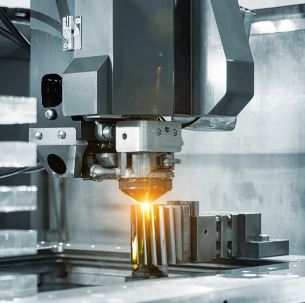
Jigs and fixture in a CNC machine
CNC (Computer Numerical Control) machining has revolutionized the manufacturing industry, providing unprecedented precision, repeatability, and speed. In this context, the importance of jigs and fixtures, which have been used in manufacturing for decades, becomes even more pronounced. They serve as a bridge, enabling the advanced capabilities of CNC machines to be fully realized on actual workpieces.
- Workpiece Holding
The very essence of jigs and fixtures revolves around workpiece holding. In CNC machining, the stability of a workpiece directly correlates with the quality of the final product. An inadequately secured workpiece can lead to machining errors, damage to the piece, or even cause harm to the machinery.
Jigs and fixtures provide that stability. They ensure that the workpiece remains immobile during the entire machining process, irrespective of the forces, vibrations, or torques applied by the cutting tools.
- Protection for Both Machine and Workpiece
Mistakes in machining can have a significant impact on costs. An unsecured workpiece may move during machining, causing damage to either the part, the machine, or both. Jigs and fixtures offer an extra layer of protection by firmly and securely holding the workpiece in place. This prevents unexpected movements that could result in catastrophic failures.
Using jigs and fixtures reduces potential repair or replacement costs and ensures the safety of machine operators.
- Precision and Accuracy
Another primary advantages of CNC machining is its ability to achieve tight tolerances and produce parts with unparalleled accuracy. Jigs and fixtures play a pivotal role in this regard.
By holding the workpiece in a defined position, they ensure that it remains stationary during the machining process. This eliminates the possibility of human error or inconsistencies arising from manual placements. When the machine operates with a consistent reference point, it becomes exponentially more accurate, ensuring parts are machined to the exact specifications every time.
- Improved Repeatability
CNC machines are known for their repeatability. Once programmed, they can produce the same part multiple times with little to no deviation. However, this repeatability can be compromised if the workpiece isn’t consistently positioned the same way each time.
Jigs and fixtures ensure that every workpiece, regardless of the batch or lot, is positioned identically. This consistent placement ensures that the machine operates under the same parameters every time, leading to parts that are virtually identical, regardless of when they were produced.
- Quick Set-up Times
Time is a crucial factor in manufacturing. The longer it takes to set up a machine, the less time it can operate, resulting in reduced output. Jigs and fixtures significantly reduce setup times in CNC machining. Well-designed jigs and fixtures enable operators to quickly and efficiently secure workpieces without the need for extensive measurements or adjustments. This means machines can be up and running faster, leading to increased productivity.
- Versatility in Machining
Modern manufacturing often requires the production of complex parts with intricate geometries. Achieving these without the aid of jigs and fixtures would be nearly impossible.
With the right fixture, CNC machines can access parts from multiple angles, perform undercuts, and execute complex milling operations. For instance, a rotary table combined with the right fixture can allow for 4-axis or even 5-axis machining, enabling the creation of parts that would be challenging or impossible with more traditional methods.
Factors Influencing Jigs and Fixture Selection
The effectiveness of jigs and fixtures relies on careful selection tailored to specific applications. Several factors come into play when deciding which jig or fixture is ideal for a given task.
1. Nature of the Operation
The kind of machining operation – whether it’s drilling, milling, turning, or any other – profoundly influences the choice of jig or fixture. For example, a drilling operation would necessitate a drill jig designed to guide the drill bit accurately. On the other hand, a milling operation might require a fixture that can accommodate the more complex movement and forces involved.
2. Complexity of the Workpiece
The more intricate a workpiece, the more sophisticated the jig or fixture needs to be. Complex parts with multiple faces, angles, and features might need custom-designed jigs or fixtures, ensuring every operation on every facet is executed flawlessly. In contrast, simpler parts might make do with standardized, off-the-shelf solutions.
3. Production Volume
The scale of production is a major determining factor. For mass production, where thousands of parts need to be machined identically, investing in highly durable and precisely crafted jigs and fixtures makes economic sense. However, for small batch production or prototyping, simpler and more adaptable solutions might be more appropriate.
4. Material of the Workpiece
Different materials present unique challenges. A fixture suitable for holding a soft aluminum part might not suffice for a harder stainless-steel component. The jig or fixture’s material and design should be compatible with the workpiece material, ensuring no damage or undue wear to either the tool or the component.
5. Tolerances and Precision Requirements
Not all machining operations demand the same level of precision. When working within tight tolerances, the accuracy of jigs and fixtures becomes paramount. In such cases, even minute discrepancies in the tooling can lead to rejected parts. Therefore, for high-precision tasks, the jigs and fixtures need to be of the highest quality, often warranting a higher investment.
6. Machine Compatibility
Not all jigs and fixtures are universally compatible with every CNC machine. It’s essential to select tools that fit and function seamlessly with the specific machines in a facility. This ensures smooth operations, reduces setup times, and minimizes risks of tool or machine damages.
7. Economic Considerations
Budgetary constraints are always a consideration. While it’s tempting to opt for the most sophisticated jigs and fixtures, it’s essential to weigh their benefits against their costs. Often, a balance needs to be struck between affordability and functionality. However, it’s crucial to remember that in precision machining, skimping on tooling quality can lead to costlier mistakes in the long run.
8. Frequency of Setup Changes
In dynamic production environments where setups change frequently, jigs and fixtures that offer quick adaptability and ease of reconfiguration can be invaluable. The time saved during setup changes can significantly impact overall production efficiency.
Table: Factors and Their Impact on Jig and Fixture Selection
| Factor | Impact |
|---|---|
| Nature of the Operation | Dictates the type and function of the jig/fixture |
| Complexity of the Workpiece | Influences the design intricacy of the tool |
| Production Volume | Determines durability and customizability requirements |
| Material of the Workpiece | Affects the material and design of jig/fixture |
| Tolerances and Precision | Impacts the quality and precision of the chosen tool |
| Machine Compatibility | Ensures seamless operation and fit |
| Economic Considerations | Balances between quality and budget |
| Frequency of Setup Changes | Prioritizes adaptability and ease of reconfiguration |
Comprehensive Design Considerations for Jigs and Fixtures

3D model of a jig& fixture
Jig and fixture design may appear straightforward due to their singular structure, especially as the popularity of hydraulic fixtures streamlines their original mechanical configurations. However, diving deeper into their design unveils a mosaic of critical considerations to ensure efficient, long-lasting, and hassle-free operations. Here’s an enhanced insight into these considerations:
1. Accounting for Blank Allowance
One of the first elements to consider is the blank allowance of the part being machined. If the blank size exceeds its stipulated dimensions, it can lead to interferences, potentially disrupting the machining process. Preparing an accurate blank drawing before embarking on the design process is thus pivotal. This ensures that the fixture or jig provides adequate space to accommodate the workpiece without hindrance.
2. Efficient Chip Evacuation
In the hustle to design compact jigs and fixtures that fit into the limited machining space, the importance of smooth chip evacuation can be inadvertently overlooked. Accumulation of machining debris or chips in concealed spaces of the fixture not only impacts its efficiency but can also obstruct the outflow of coolant or cutting fluids. Prioritizing a design that addresses chip evacuation ensures that the machining environment remains clean and operations are uninterrupted.
3. Emphasizing Openness in Design
The accessibility of jigs and fixtures directly affects the ease with which an operator can load or unload workpieces. A design that lacks openness can make the process time-consuming, cumbersome, and counterproductive. Therefore, it’s essential to design tools that allow for straightforward and rapid loading and unloading, ensuring swift operations.
4. Adhering to Fundamental Principles
Every jig and fixture undergoes numerous cycles of clamping and de-clamping throughout its life. While a design might meet initial requirements, its durability and accuracy retention over prolonged use are of paramount importance. Adhering to the fundamental principles of jig and fixture design ensures that the tool remains effective and accurate even after extensive use. A well-thought-out design not only serves its immediate purpose but also stands the test of time.
5. Replaceability of Positioning Elements
Given the frequent and sometimes abrasive interactions positioning elements have with workpieces, wear and tear are inevitable. Thus, their design should cater to easy and quick replacement. Instead of integrating larger, cumbersome components, it’s beneficial to incorporate modular elements that can be swiftly replaced when worn out.
6. Ensuring Operator Safety
The well-being of operators should always be at the forefront of any design. Avoiding sharp edges, ensuring stable clamping, and considering ergonomic factors can prevent potential accidents and ensure that the operator can use the jig or fixture safely.
7. Compatibility with Machine Tools
Every jig or fixture needs to be compatible with the machine tools it’s designed for. This involves considering the tool’s dimensions, operational range, and other specifics to ensure the jig or fixture fits perfectly and operates seamlessly.
8. Durability and Maintenance
Overlooking the importance of durability can lead to frequent breakdowns and maintenance. Selecting wear-resistant materials and considering ease of maintenance during the design phase can reduce downtime and increase operational efficiency.
Table: Essential Design Considerations for Jigs and Fixtures
| Design Consideration | Importance |
|---|---|
| Blank Allowance | Avoids interference and ensures smooth operations |
| Chip Evacuation | Keeps the machining environment clean and ensures uninterrupted operations |
| Design Openness | Ensures quick and effortless loading/unloading of workpieces |
| Fundamental Principles | Guarantees tool longevity and sustained accuracy |
| Replaceability | Allows for easy maintenance and reduces downtime |
| Operator Safety | Prevents accidents and enhances operator confidence |
| Compatibility | Ensures the jig or fixture aligns perfectly with machine tools |
Prolean’s CNC Machining Services: Precision and Perfection
In a rapidly evolving manufacturing landscape, where precision is of paramount importance and every micrometer counts, Prolean stands out as a beacon of excellence. Drawing a parallel with the vital role of jigs and fixtures in ensuring the exactitude of machining operations, Our CNC Machining Services is a testament to the company’s unwavering commitment to delivering perfection.
- Precision & Consistency: Our CNC machining is renowned for producing parts with unmatched accuracy and consistency, reflecting the essence of CNC machining.
- Commitment to Advancement: The company not only maintains its excellence but pushes boundaries by investing in state-of-the-art machinery and continuously updating software, ensuring alignment with the latest industry innovations.
- Beyond Just Machinery: While machinery forms the foundation, Prolean recognizes that excellence extends beyond it. The company comprehends the pivotal role of jigs and fixtures in CNC machining.
- Attention to Detail: By integrating carefully designed jigs and fixtures, Prolean ensures that each workpiece is positioned perfectly, mitigating any variances and upholding the highest quality standards.
- Adaptability is Key: Echoing the industry’s focus on adaptability and flexibility, Prolean has structured its CNC machining processes to be versatile, catering to an extensive range of workpieces and operations.
- Meeting Diverse Needs: Our adaptability translates into meeting a spectrum of client requirements, spanning from intricate prototype creations to bulk mass production endeavors.
Summing Up
In the intricate dance of modern manufacturing, jigs and fixtures play a pivotal role, in ensuring precision, safety, and efficiency. They stand as silent yet essential facilitators, guaranteeing that every product churned out meets the exacting standards set by industries. As technology advances, the need for tools that facilitate just-in-time manufacturing and lean production techniques increases. Jigs and fixtures minimize the time spent on setup and changeovers by ensuring the correct alignment of workpieces, reducing errors and rework.
A well-designed jig or fixture not only prevents accidents but also instills confidence in the workforce, leading to better productivity. The adaptability and durability of these tools further underline their significance because they are adaptable and durable, making them useful in dynamic environments.
FAQ’s
What is the primary difference between jigs and fixtures?
While jigs guide the cutting tool, fixtures hold the workpiece in position.
Are jigs commonly used in operations other than drilling?
Although primarily used for drilling, jigs can also be adapted for other operations depending on the design.
How do fixtures enhance machining accuracy?
Fixtures ensure the workpiece is held in the exact position and orientation throughout the machining process, ensuring consistent and accurate results.
What factors should I consider when selecting a jig or fixture?
Consider the complexity of the part, production volume, and the machining accuracy required.
How do jigs and fixtures influence production speed?
They allow for quicker setups, and consistent positioning, and reduce manual intervention, thereby speeding up the production process.
Why choose Prolean’s CNC Machining Services for jigs and fixtures?
Prolean offers high-quality, tailored solutions ensuring optimal performance, precision, and durability in all machining task

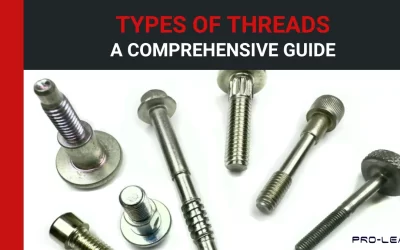
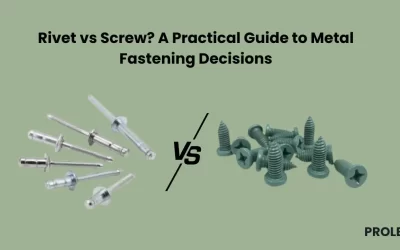
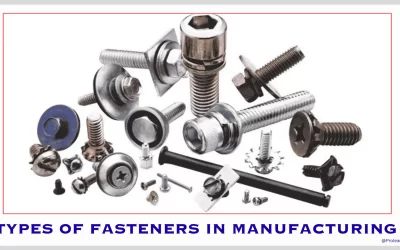
0 Comments